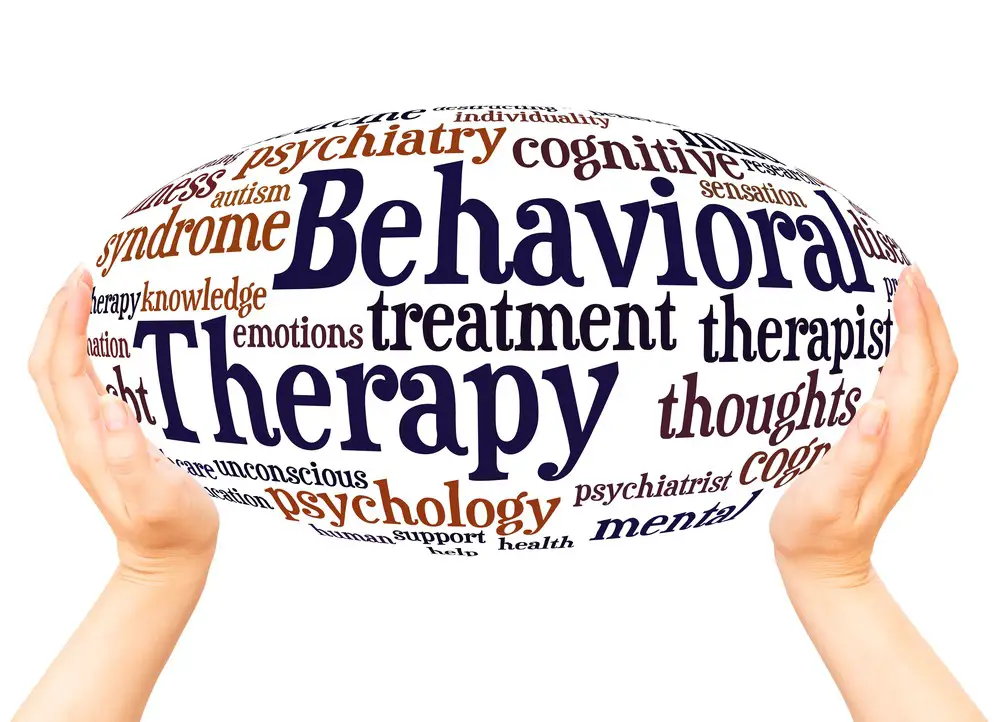As a BetterHelp affiliate, we receive compensation from BetterHelp if you purchase products or services through the links provided
Naked therapy, a controversial yet intriguing method, offers a unique approach to traditional counseling. Its primary focus is breaking down barriers and promoting openness by engaging the client and therapist in a therapeutic session while both are unclothed. The practice gained popularity in the late 2000s after photographer Francesco Sapienza documented and shared his experience.
Though many question the legitimacy of naked therapy, it’s essential to understand its core concepts, tools, and techniques to make an informed decision. Proponents of this form of therapy emphasize that it facilitates clients’ vulnerability, promotes openness, and improves self-acceptance. Opponents argue that it may blur ethical boundaries and jeopardize the client-counselor relationship, raising questions about its effectiveness and necessity.
Key Takeaways
- Naked therapy emerged in the late 2000s, gaining attention through Francesco Sapienza’s documentation.
- The practice focuses on vulnerability, openness, and self-acceptance in a therapeutic setting.
- Critics express concerns about ethical boundaries and the legitimacy of this method.
“Naked Therapy™ (N.T.) is an experience that combines elements from positive and person-centered talk therapy, experiential therapy, and creative play therapy, with the added component of the client and/or therapist getting naked to facilitate more honest and unique insights through the experience of arousal.”
—Sarah White, the Naked Therapist™
 The Concept of Naked Therapy
The Concept of Naked Therapy
Founding and Growth
Naked Therapy, a relatively new form of therapy, was founded by Sarah White in 2010. The idea behind it is to incorporate nudity and elements of sexuality into therapeutic sessions. White, a self-proclaimed Naked Therapist, saw potential in combining her studies in psychology with the natural connection between nudity, arousal, and emotional vulnerability. The practice gained momentum and has grown since its inception, fostering a subculture within the therapeutic community.
Arousing Curiosities: What Exactly Is Naked Therapy?
Naked Therapy is a unique therapeutic approach that integrates elements of nudity and arousal. Clients are encouraged to explore sexuality during sessions, discovering their arousal’s emotional and psychological aspects. This experience can lead to more profound self-awareness and a deeper understanding of one’s desires and needs.
Central to Naked Therapy is The Arousal Plan, a framework that incorporates arousal into the therapeutic process. Some key elements of the plan include:
- Embracing sexuality: Encouraging clients to accept and celebrate their sexual desires.
- Exploring vulnerability: Nudity naturally exposes one’s vulnerabilities, facilitating the expression of deep-seated emotions and unresolved issues.
- Developing self-compassion: Cultivating a positive self-image and finding comfort in one’s skin.
While Naked Therapy is a fascinating and provocative approach to mental health, it’s essential to approach it cautiously. Ensuring the therapist has proper qualifications and operates within professional boundaries is crucial. Potential clients should educate themselves on the practice before engaging in such sessions and always prioritize their safety and well-being.
The Naked Therapy Session
Making it Accessible and Convenient – Web Sessions
As a unique approach to traditional therapy, Naked Therapy has embraced web sessions as a platform to provide its services. Clients can engage with their therapist through video calls, creating a safe and convenient environment. This enables individuals who may be hesitant or unable to attend in-person appointments to access and benefit from naked therapy in their homes.
Creating an Unorthodox Therapeutic Environment
In naked therapy, the therapist and the client are unclothed during the session. This distinctive aspect breaks down barriers and promotes openness between the therapist and the individual seeking help. Participants often feel liberated and less guarded as they confront their issues in this atypical setting.
The therapist employs the arousal plan as a fundamental element of the naked therapy session. This plan incorporates the client’s arousal state to achieve their therapeutic goals. Clients often experience unique insights and a heightened sense of self-awareness as they work through their issues in a physical state of arousal.
During a session, therapists focus on the clients:
- Goals: Identifying and working towards specific personal or interpersonal objectives.
- Achieving clarity: Utilizing the distinctive environment of a naked therapy session to improve communication between the therapist and the client, resulting in a greater understanding of underlying issues.
- Unique insights: Through the arousal plan and the open environment, clients often gain new perspectives on their problems.
Overall, naked therapy promotes individual self-discovery and personal growth by leveraging the unorthodox environment of the session and the arousal plan to address clients’ issues and drive progress.
Explanation of Tools and Techniques
The Clear Menu and Regular Updates
Naked therapy utilizes a clear menu and regular updates to inform clients about their therapy journey. The menu presents various therapeutic activities, allowing clients to choose according to their needs. Regular updates ensure the activities remain relevant, effective, and up-to-date with current therapeutic practices.
Saved Locally – Ensuring Privacy
Privacy remains a top priority in naked therapy. All client data, including activity records, are saved locally on their computer. This local storage ensures no sensitive information is transferred to external systems, safeguarding clients’ privacy and personal information.
Links and Resources
To enhance the therapeutic experience, naked therapy offers various links and resources that clients can use to explore their self-improvement journey further. These resources, such as informative articles and educational videos, provide valuable information for clients to apply in their therapy sessions and daily life. Disabling links are also available for those who prefer a strictly offline experience.
Therapeutic Insights and Influence
Addressing Depression Using Naked Therapy
Naked therapy is a unique approach to addressing depression. This form of therapy encourages individuals to confront their vulnerabilities by removing the physical barriers of clothing. By stripping away layers, clients gain insight into the root causes of their depression and begin to build self-confidence. This method helps create a sense of empowerment and control over one’s body and emotions.

Person-Centered Talk Therapy
Person-centered talk therapy prioritizes the client’s needs and encourages self-exploration through open conversation. The therapist maintains a neutral stance and provides a safe space for clients to express their thoughts and feelings. This therapeutic approach promotes self-awareness and fosters personal growth, thus enabling individuals to manage their mental illness better.
Experiential Therapy
Experiential therapy encourages clients to engage in activities promoting emotional healing and personal growth actively. By participating in these therapeutic experiences, such as role-playing, guided imagery, or mindfulness exercises, individuals gain new insights into their depression and mental illness. The therapist guides clients in processing their emotions and understanding the significance of each activity.
Creative Play Therapy
Creative play therapy uses artistic expression as a means of communication and self-discovery. Clients engage in drawing, painting, or writing activities to explore their emotions and better understand their struggles. This form of therapy offers an opportunity for people with depression to find alternative methods of expression, fostering a sense of self-compassion and well-being.
The Controversy and Necessity
The Performance Art Aspect
Naked therapy, as a concept, has sparked a great deal of controversy due to its blending of therapeutic practices and performance art. Some argue that it pushes the boundaries of conventional therapy, which typically focuses on conversation and self-reflection. In naked therapy sessions, the therapist or the client may be nude, adding a layer of vulnerability and bodily awareness. By utilizing the human form as a canvas for self-expression, naked therapy asserts that therapists and clients can confront their perceptions of their bodies and selves in a deeper, more meaningful manner.
Dreaming with Confidence
Naked therapy is about building confidence, vital to self-discovery and personal growth. Clients in naked therapy often report increased self-esteem and a renewed sense of self-acceptance. In particular, the practice empowers individuals to confront and dismantle their fears, insecurities, and inhibitions.
This newfound confidence can manifest in clients’ lives, including dreaming. Incorporating naked therapy into one’s life can lead to more vivid, empowering dreams as clients’ subconscious minds adapt to this newfound sense of liberation and self-assurance. Embracing one’s body and vulnerability in a therapeutic setting can help individuals explore their inner selves more authentically, fostering growth and self-improvement.

Frequently Asked Questions
What are the benefits of naked therapy?
Naked therapy offers a unique approach to therapy that some individuals find empowering and liberating. It can help clients feel more comfortable expressing their emotions, increase self-esteem, and reduce feelings of shame and inhibition. This form of therapy may also promote body positivity and a deeper connection with oneself.
Is naked therapy a legitimate form of therapy?
While naked therapy is not recognized by professional associations such as the American Psychological Association (APA), it can be a valid form of therapy for some clients, especially if practiced by a licensed mental health professional. However, consulting a therapist and discussing the best approach to an individual’s needs and goals is essential.
How does naked therapy differ from traditional therapy?
The primary difference between naked therapy and traditional therapy is the element of nudity. The client and therapist may be fully or partially nude during their sessions in naked therapy. This approach aims to create an honest and open environment, facilitating deeper communication and emotional connection.
What are the potential dangers of naked therapy?
There are potential risks involved with naked therapy, mainly if practiced by unqualified or unethical practitioners. These risks might include breaches of confidentiality, emotional manipulation, or inappropriate sexual behavior. Ensuring the chosen naked therapist is a licensed mental health professional with robust ethical guidelines is crucial.
How do I find a professional naked therapist?
Finding a professional naked therapist may require conducting thorough research. It is essential to verify potential therapists’ credentials, qualifications, and professional experience. Online platforms, personal recommendations, and directories of mental health professionals may offer helpful suggestions. Additionally, discussing the option with a current therapist or counselor could provide valuable insights.
Are there alternative therapeutic methods similar to naked therapy?
Various alternative therapeutic methods focus on body awareness, vulnerability, and openness. Some include somatic experiencing therapy, which helps clients address trauma through bodily sensations, and dance/movement therapy, which utilizes movement and nonverbal expressions for emotional healing.
These alternatives may provide similar benefits as naked therapy to those seeking a more unconventional approach to therapy while prioritizing safety and professional standards.
- Breaking the Silence: Why Men’s Mental Health Matters More Than Ever - April 15, 2025
- How to Transform a Home’s Patio Space into a Relaxing Space - March 23, 2025
- 5 Strategies to Use a Cell Phone to Help Manage Your Stress - March 23, 2025
This site contains affiliate links to products. We will receive a commission for purchases made through these links.


 The Concept of Naked Therapy
The Concept of Naked Therapy
